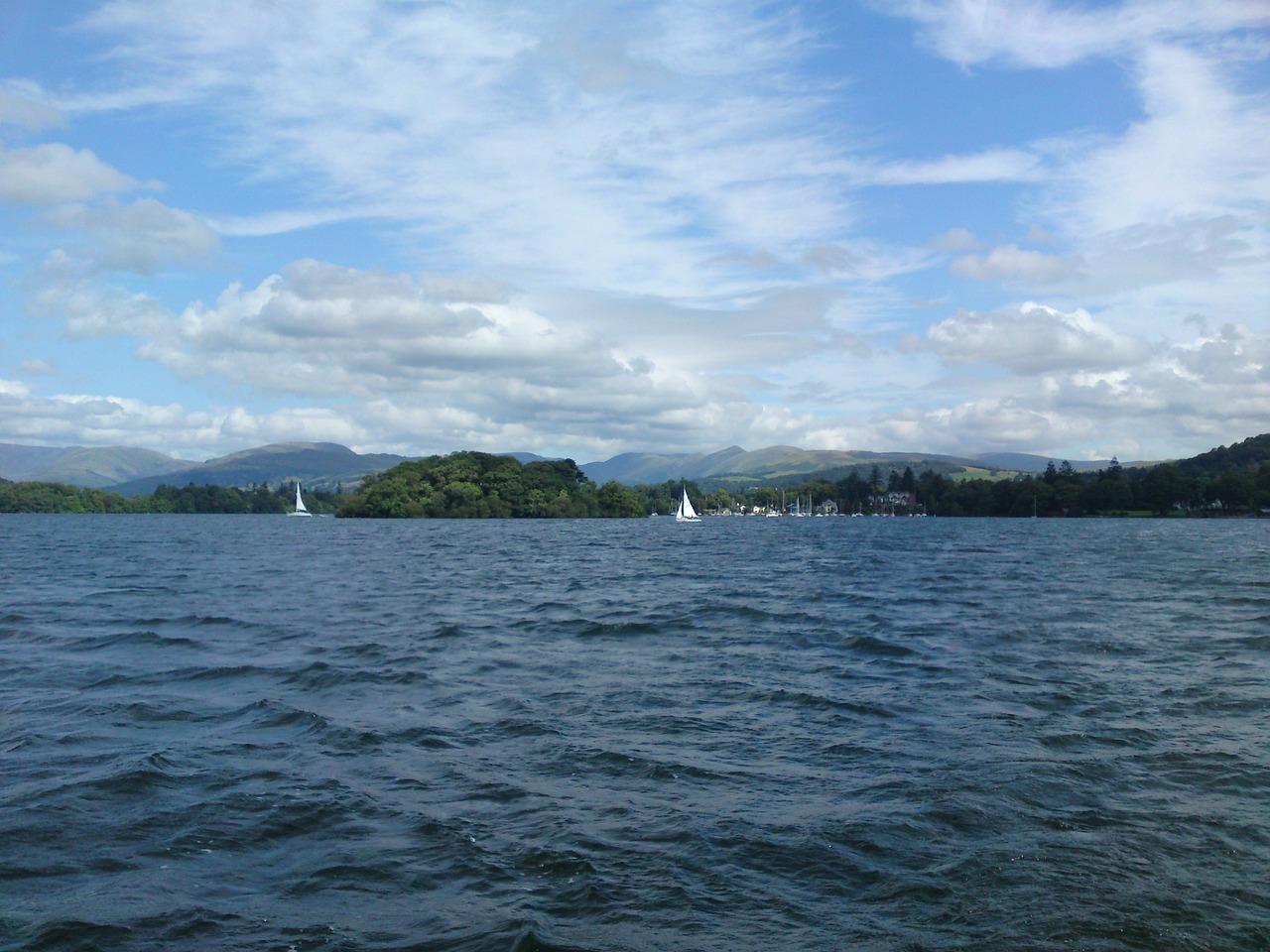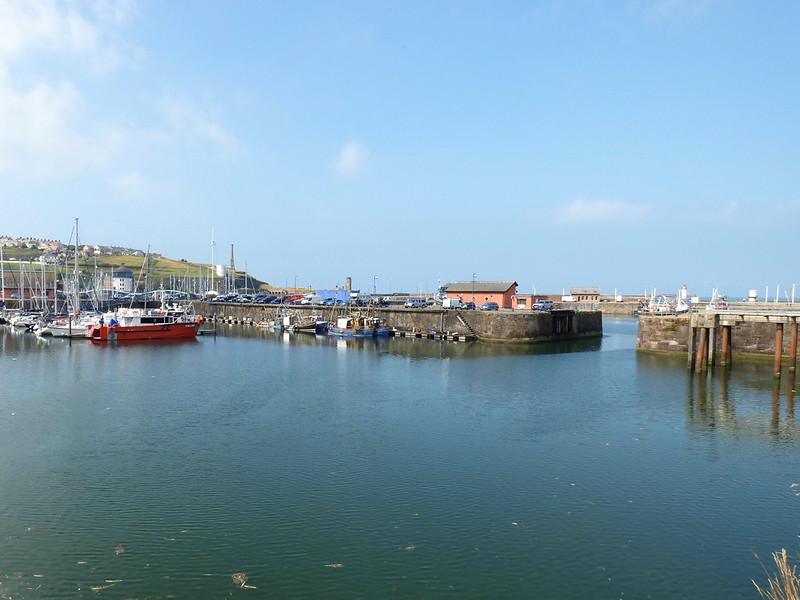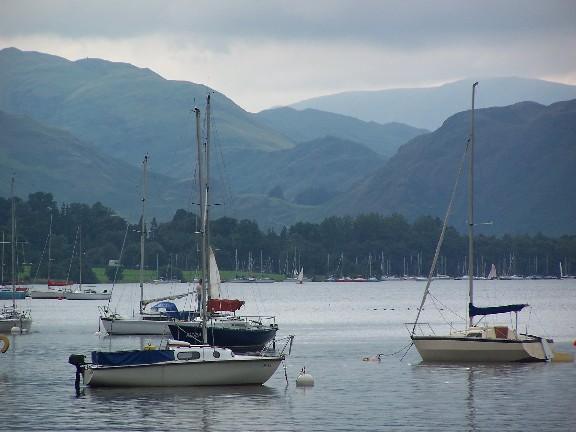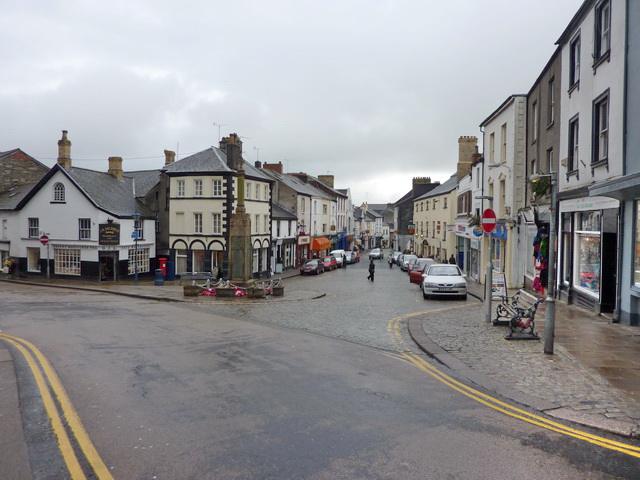Introduction to Cumbria
Cumbria, a county in North West England, is renowned for its stunning landscapes, rich history, and vibrant culture. Home to the Lake District National Park, a UNESCO World Heritage Site, and numerous historical landmarks, Cumbria offers a perfect blend of natural beauty and cultural experiences. This guide will take you through the highlights of Cumbria, providing insights into its attractions, activities, and hidden gems.
History of Cumbria
Ancient Beginnings
Cumbria's history stretches back to prehistoric times, with evidence of human habitation dating back to the Neolithic period. Ancient stone circles, such as Castlerigg near Keswick, stand as testaments to these early inhabitants. The region was known for its Celtic tribes before the Roman invasion.
Roman Influence and Hadrian’s Wall
The Romans left a significant mark on Cumbria, most notably with the construction of Hadrian’s Wall, a UNESCO World Heritage Site. Built in the 2nd century AD, the wall served as the northern frontier of the Roman Empire. Today, visitors can explore well-preserved sections of the wall, along with Roman forts like Birdoswald and Vindolanda.
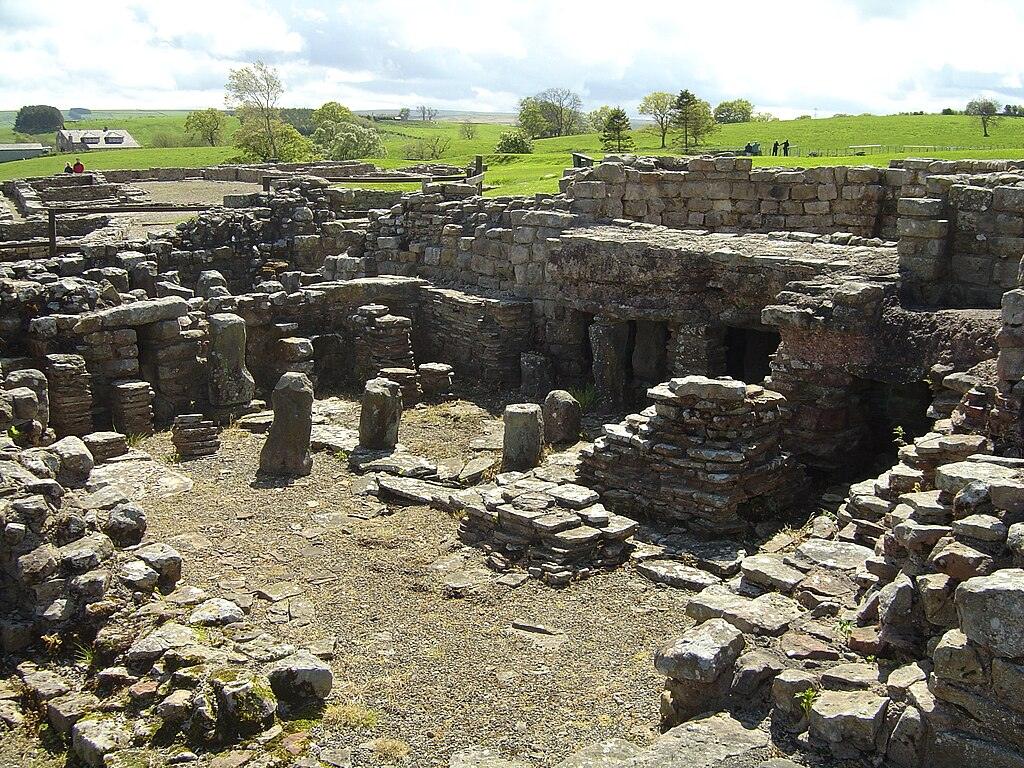
Medieval Period and Castles
During the medieval period, Cumbria was a contested region, with frequent conflicts between England and Scotland. This era saw the construction of many castles and fortifications, including Carlisle Castle and Penrith Castle. These structures served both as defensive strongholds and as seats of local power.
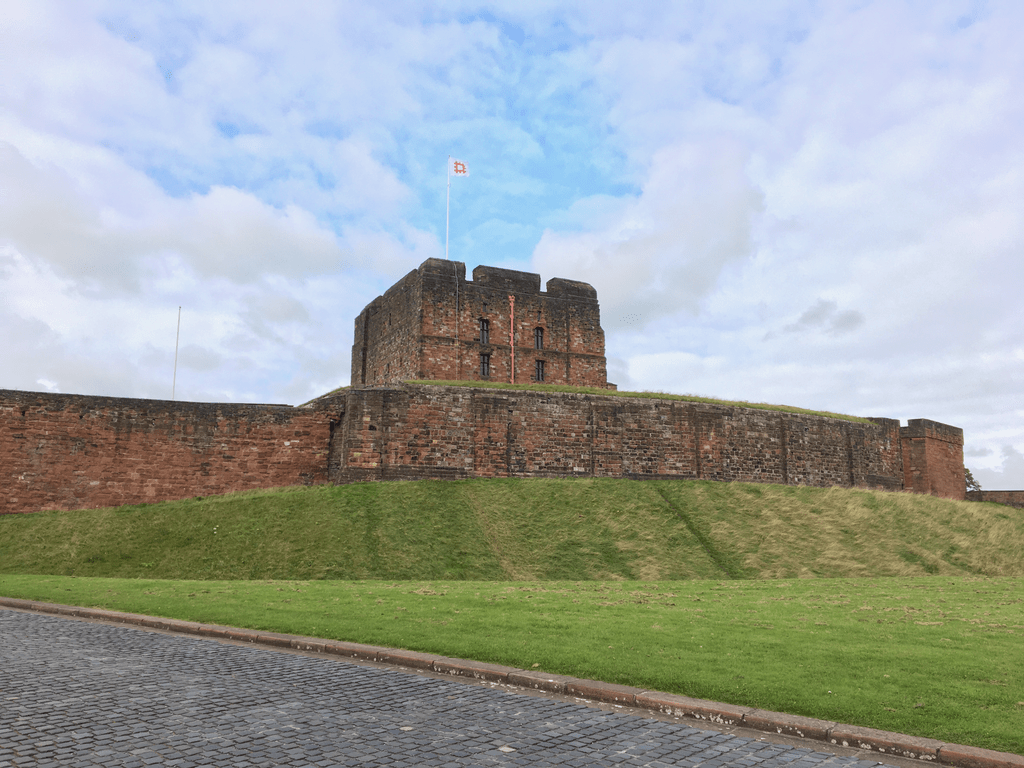
Industrial Revolution and Modern Era
The Industrial Revolution brought significant changes to Cumbria, particularly in towns like Barrow-in-Furness, which became a major centre for shipbuilding and industry. The expansion of the railway network facilitated tourism to the Lake District, helping to establish it as a popular destination. Today, Cumbria balances its industrial heritage with a focus on conservation and tourism.
Geography and Climate of Cumbria
Location and Topography
Cumbria is located in North West England, bordered by Scotland to the north, Northumberland to the east, and Lancashire to the south. The county is characterised by its diverse landscapes, including mountains, lakes, and coastal areas. The Lake District, with its rugged fells and deep valleys, is the most famous part of Cumbria.
Climate and Weather Patterns
Cumbria experiences a temperate maritime climate, with mild summers and cool, wet winters. The weather can be unpredictable, especially in the mountainous regions of the Lake District, where conditions can change rapidly. Rain is common throughout the year, contributing to the lush green landscapes.
Natural Landscapes and Protected Areas
The Lake District National Park is the jewel in Cumbria's crown, covering a large portion of the county. Other significant natural areas include the North Pennines Area of Outstanding Natural Beauty (AONB) and the Solway Coast AONB. These protected areas offer stunning scenery, diverse wildlife, and numerous opportunities for outdoor recreation.
Major Towns and Cities in Cumbria
Carlisle: The Historic Border City
Carlisle, the county town of Cumbria, has a rich history dating back to Roman times. Key attractions include Carlisle Castle, the Carlisle Cathedral, and the Tullie House Museum. The city is also a gateway to exploring Hadrian’s Wall.
Kendal: The Gateway to the Lakes
Kendal, known as the "Gateway to the Lakes," is famous for its historic buildings, charming streets, and Kendal Mint Cake. The town offers easy access to the Lake District and attractions like Kendal Castle and the Quaker Tapestry Museum.
Keswick: The Heart of the Lake District
Keswick is a bustling market town in the heart of the Lake District, popular with tourists for its outdoor activities and beautiful scenery. Attractions include Derwentwater, the Keswick Museum, and the Theatre by the Lake. The town is a hub for hiking, with numerous trails leading into the surrounding fells.
Penrith: A Blend of History and Modernity
Penrith is a historic market town with a mix of old and new. The town is home to Penrith Castle, the ruins of Brougham Castle, and the stunning Dalemain Mansion. Penrith's location makes it a convenient base for exploring both the Lake District and the Eden Valley.
Barrow-in-Furness: Coastal Charm and Industry
Barrow-in-Furness, located on the Furness Peninsula, is known for its shipbuilding heritage. The town offers coastal charm with attractions like the South Walney Nature Reserve and the Dock Museum. Barrow's industrial past is balanced with efforts to promote tourism and regeneration.
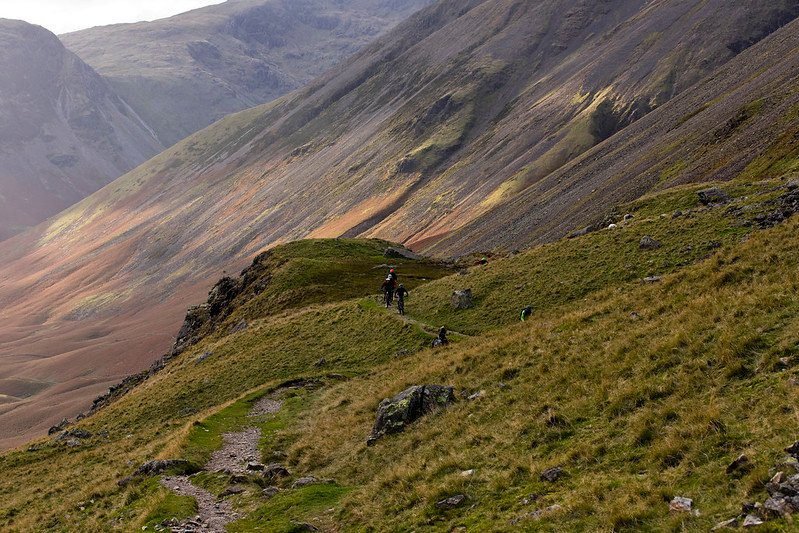
The Lake District National Park
History and Significance
The Lake District National Park is England's largest national park and a UNESCO World Heritage Site. Its landscape has inspired poets, writers, and artists for centuries. The park's conservation efforts focus on preserving its natural beauty and cultural heritage.
Top Attractions in the Lake District
Some of the top attractions in the Lake District include Windermere, England's largest lake; Scafell Pike, the highest mountain in England; and the picturesque towns of Ambleside and Grasmere. Beatrix Potter’s Hill Top and William Wordsworth’s Dove Cottage are must-visit sites for literature enthusiasts.
Outdoor Activities and Adventures
The Lake District offers a plethora of outdoor activities, including hiking, climbing, boating, and cycling. Popular hikes include the Helvellyn Ridge, Catbells, and the Old Man of Coniston. Lake Windermere and Derwentwater are ideal for boating and water sports.
Famous Lakes and Scenic Spots
The Lake District is home to many beautiful lakes, including Windermere, Ullswater, Coniston Water, and Derwentwater. Each lake has its unique charm and offers stunning views, recreational opportunities, and tranquil spots for relaxation.
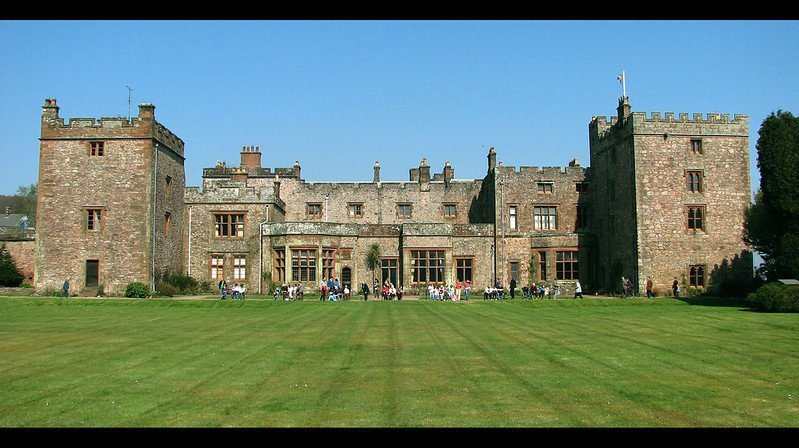
Tourist Attractions in Cumbria
Hadrian’s Wall
Hadrian’s Wall is one of Cumbria’s most iconic historical attractions. Stretching across northern England, the wall offers numerous sites to explore, including forts, milecastles, and museums. Birdoswald Roman Fort and Housesteads Roman Fort are among the best-preserved sections.
Carlisle Castle
Carlisle Castle has stood guard over the city for more than 900 years. Visitors can explore the castle’s history, including its role in the border conflicts between England and Scotland. The castle also houses the Cumbria’s Museum of Military Life.
Muncaster Castle
Muncaster Castle, located near Ravenglass, is a historic and haunted castle with stunning gardens and a rich history. The castle offers guided tours, special events, and access to the Hawk & Owl Centre, making it a fascinating destination for visitors of all ages.
Beatrix Potter’s Hill Top
Hill Top, the former home of beloved author Beatrix Potter, is a charming 17th-century farmhouse preserved by the National Trust. Visitors can explore the house, gardens, and surrounding countryside that inspired many of Potter’s stories.
The World of Beatrix Potter Attraction
Located in Bowness-on-Windermere, this family-friendly attraction brings Beatrix Potter’s stories to life with exhibits, interactive displays, and beautifully recreated scenes from her books. It’s a magical experience for fans of all ages.
Ullswater Steamers
Ullswater Steamers offers scenic cruises on Ullswater, one of the Lake District’s most beautiful lakes. The steamers provide a unique way to experience the lake’s stunning landscapes and connect to popular walking routes such as the Ullswater Way.
Ravenglass and Eskdale Railway
The Ravenglass and Eskdale Railway, affectionately known as La’al Ratty, is a historic narrow-gauge railway that runs from the coastal village of Ravenglass to the foothills of the Eskdale Valley. The scenic journey offers beautiful views and is a delightful experience for railway enthusiasts and families.
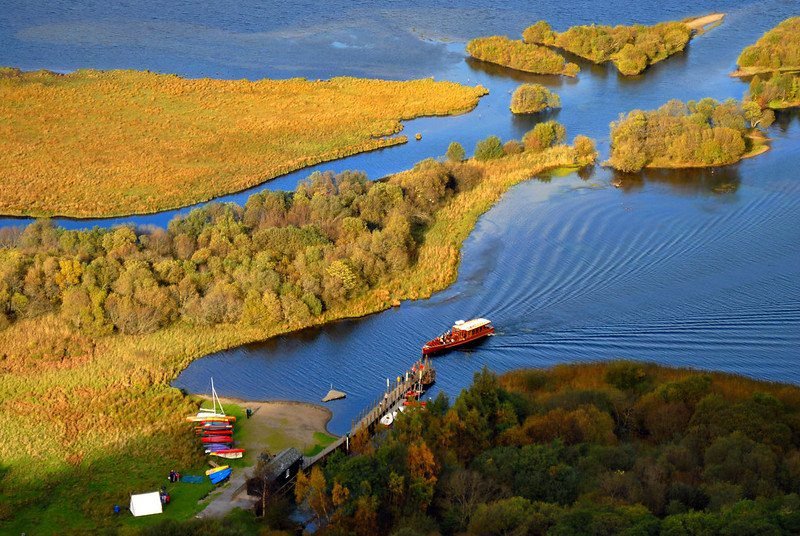
Outdoor Activities in Cumbria
Hiking and Walking Trails
Cumbria is a paradise for hikers, with countless trails offering spectacular views and varied terrain. Popular routes include the Coast to Coast Walk, the Cumbria Way, and the many fells and peaks within the Lake District. Trails cater to all levels, from easy walks to challenging climbs.
Cycling Routes
Cycling is a great way to explore Cumbria’s landscapes. The county offers numerous cycling routes, including the C2C (Sea to Sea) Cycle Route, the Lake District Loop, and the Hadrian’s Cycleway. These routes provide scenic views and a mix of on-road and off-road cycling experiences.
Watersports and Boating
The lakes and rivers of Cumbria offer excellent opportunities for watersports and boating. Activities such as kayaking, canoeing, paddleboarding, and sailing are popular on lakes like Windermere, Coniston Water, and Ullswater. Equipment rental and guided tours are available for visitors.
Wildlife Watching and Birding
Cumbria’s diverse habitats support a wide range of wildlife, making it an ideal destination for nature enthusiasts. Birdwatchers can spot species such as ospreys, red kites, and golden eagles. Wildlife reserves and nature trails provide opportunities to observe deer, otters, red squirrels, and other animals in their natural habitats.
Climbing and Mountaineering
Cumbria is a renowned destination for climbing and mountaineering, with its rugged terrain offering numerous challenges. Classic climbing spots include Scafell Pike, Helvellyn, and the Langdale Pikes. Indoor climbing centres and guided climbing tours are also available for those seeking instruction or a controlled environment.
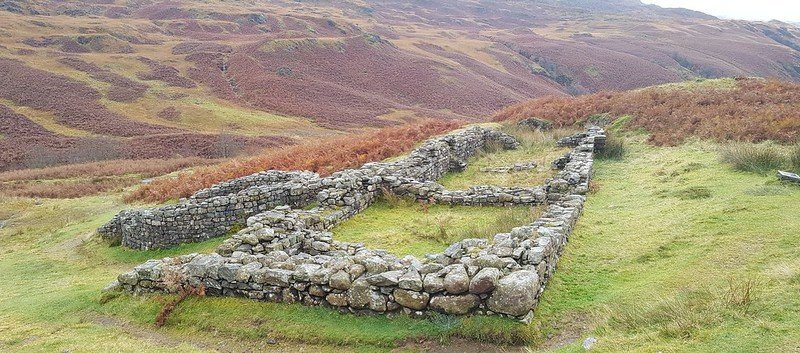
Cultural Heritage of Cumbria
Local Traditions and Festivals
Cumbria is rich in local traditions and festivals that celebrate its cultural heritage. Events such as the Kendal Mountain Festival, the Appleby Horse Fair, and the Cumberland Show showcase the region’s history, agriculture, and community spirit. Traditional music, dance, and crafts are integral parts of these celebrations.
Cumbrian Dialect and Folklore
The Cumbrian dialect is a unique blend of English and Old Norse, reflecting the county’s historical influences. Folklore and legends are an important part of Cumbrian culture, with tales of giants, fairies, and mythical creatures adding to the region’s charm. These stories are often shared during festivals and community events.
Historic Buildings and Architecture
Cumbria boasts a wealth of historic buildings and architectural landmarks. From medieval castles and stately homes to charming cottages and stone bridges, the county’s architecture tells the story of its past. Notable buildings include the 12th-century Furness Abbey, the Georgian elegance of Dalemain Mansion, and the Victorian grandeur of Brockhole.
Museums and Galleries
Cumbria’s museums and galleries offer insights into the county’s history, art, and culture. The Tullie House Museum in Carlisle, the Museum of Lakeland Life & Industry in Kendal, and the Dock Museum in Barrow-in-Furness are among the notable institutions. Art galleries such as the Abbot Hall Art Gallery in Kendal showcase works by local and national artists.
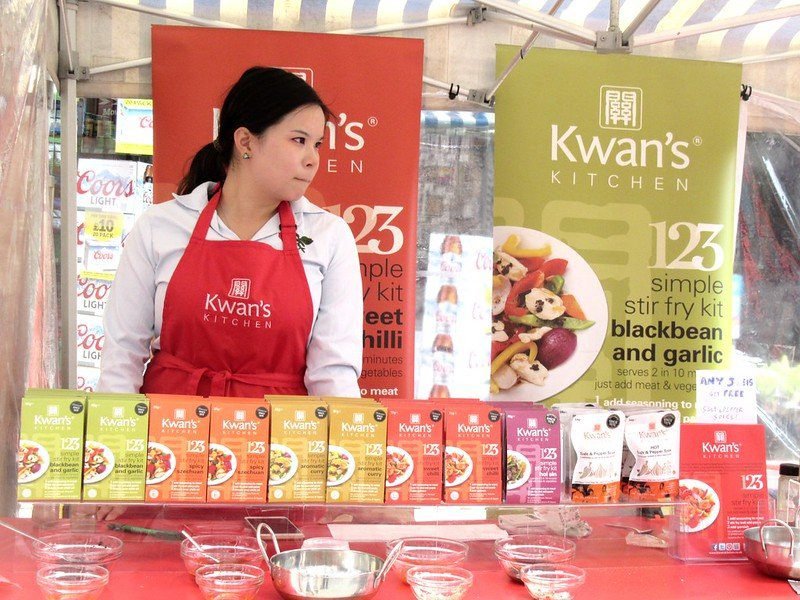
Food and Drink in Cumbria
Traditional Cumbrian Dishes
Cumbria is known for its hearty and delicious traditional dishes. Must-try foods include Cumberland sausage, a coiled and spiced pork sausage; Herdwick lamb, known for its rich flavour; and Grasmere gingerbread, a unique treat with a spicy kick. Sticky toffee pudding said to have originated in Cumbria, is a popular dessert.
Popular Restaurants and Eateries
Cumbria offers a diverse culinary scene, with restaurants and eateries catering to all tastes. Michelin-starred establishments such as L’Enclume in Cartmel and The Forest Side in Grasmere provide gourmet dining experiences. Cosy pubs and cafes throughout the county serve delicious meals made with locally sourced ingredients.
Local Breweries and Pubs
Cumbria has a rich brewing tradition, with numerous local breweries producing a variety of ales and beers. Notable breweries include Jennings Brewery in Cockermouth and Hawkshead Brewery in Staveley. Traditional pubs, such as the Kirkstile Inn and The Drunken Duck Inn, offer a warm welcome and a taste of Cumbrian hospitality.
Food Festivals and Farmers’ Markets
Food festivals and farmers’ markets are a highlight of Cumbria’s culinary calendar. The Kendal Food Festival, the Taste Cumbria Festival in Cockermouth, and the Holker Chilli Fest celebrate local produce and culinary talent. Farmers’ markets in towns like Penrith and Keswick offer fresh, seasonal produce and artisanal goods.
Accommodation in Cumbria
Luxury Hotels and Resorts
Cumbria offers a range of luxury accommodation options for those seeking a high-end experience. Hotels such as The Samling in Windermere, Armathwaite Hall in Keswick, and Gilpin Hotel & Lake House in Bowness-on-Windermere provide elegant rooms, fine dining, and exceptional service. These luxury hotels often feature spa facilities, beautiful grounds, and breathtaking views.
Bed and Breakfasts
For a more personalised and cosy experience, consider staying at one of Cumbria’s charming bed and breakfasts. These establishments often provide a homey atmosphere, personalized service, and hearty breakfasts. Recommended B&Bs include The Grange Country House in Keswick and The Quiet Site near Ullswater.
Holiday Cottages and Self-Catering
Holiday cottages and self-catering accommodations offer a home-away-from-home experience, perfect for families and groups. Cumbria has a variety of cottages available for short and long stays, offering privacy and the convenience of self-catering. Explore a wide variety of options on our sister site, MyListings, where you'll find plenty of choices tailored to your needs.
Camping and Caravan Sites
For those who enjoy the great outdoors, Cumbria has numerous camping and caravan sites. Locations like Low Wray Campsite on Windermere and Park Cliffe Camping and Caravan Estate offer excellent facilities and easy access to local attractions. These sites are perfect for nature lovers, providing a chance to immerse yourself in the beautiful landscapes of Cumbria.
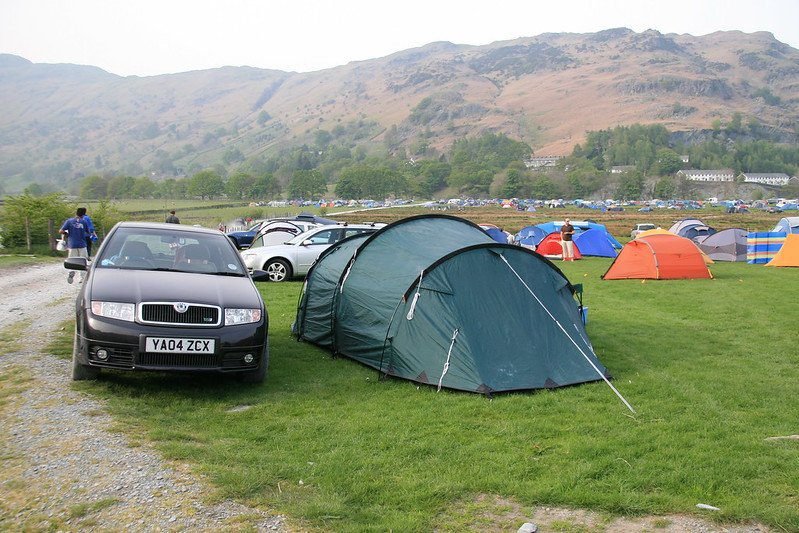
Arts and Entertainment
Theatres and Performing Arts
Cumbria has a vibrant arts scene, with theatres and performing arts venues offering a variety of productions. The Theatre by the Lake in Keswick, the Old Laundry Theatre in Bowness-on-Windermere, and the Brewery Arts Centre in Kendal are notable venues. These theatres host everything from classical plays to contemporary performances, contributing to the county’s cultural landscape.
Music Venues and Events
Cumbria’s music scene is diverse and dynamic, with venues catering to all tastes. The Sands Centre in Carlisle, the Kendal Brewery Arts Centre, and the Forum Theatre in Barrow-in-Furness are prominent music venues. The county also hosts a variety of music festivals, including Kendal Calling and the Solfest, featuring performances from local and international artists.
Art Galleries and Exhibitions
Cumbria is home to a range of art galleries and exhibitions showcasing local and national talent. The Abbot Hall Art Gallery in Kendal, the Penrith and Eden Museum, and the Rheged Centre near Penrith are notable institutions. These galleries offer exhibitions, workshops, and educational programs that highlight the region’s artistic heritage.
Film and Television Locations
Cumbria has served as a filming location for numerous films and television series, thanks to its diverse landscapes and historic sites. Notable productions filmed in the county include "Miss Potter," "Withnail and I," and the television series "The Lakes." Visitors can explore these iconic locations and gain a behind-the-scenes look at their favourite shows and movies.
Shopping in Cumbria
High Street Shopping
Cumbria’s towns and cities offer a variety of high-street shopping experiences. Carlisle, Kendal, and Barrow-in-Furness have bustling shopping districts with a mix of well-known retailers, independent shops, and boutiques. High street shopping in Cumbria provides a blend of traditional and contemporary options, catering to all tastes and budgets.
Markets and Independent Stores
Traditional markets and independent stores are a significant part of Cumbria’s shopping scene. Markets such as Keswick Market, Penrith Market, and Kendal Market offer a range of goods, from fresh produce to unique crafts. Independent stores throughout the county provide a personalized shopping experience, with unique products and friendly service.
Shopping Centers and Malls
For those who prefer a more modern shopping experience, Cumbria has several shopping centres and malls. The Lanes Shopping Centre in Carlisle, the Westmorland Shopping Centre in Kendal, and the Portland Walk Shopping Centre in Barrow-in-Furness are key shopping destinations. These centres offer a variety of shops, restaurants, and entertainment options.
Artisan and Craft Shops
Cumbria is a treasure trove for artisan and craft enthusiasts. Towns like Keswick, Grasmere, and Ambleside have numerous craft shops and galleries showcasing local artisans' work. Visitors can find handmade jewellery, pottery, textiles, and more, making it a great place to find unique and locally crafted souvenirs.
Transportation and Getting Around
Public Transport Options
Cumbria offers a variety of public transport options, making it easy to travel within the county and beyond. Train services, operated by Northern Rail and Avanti West Coast, connect major towns and cities. Local bus services, provided by companies like Stagecoach, offer routes throughout the county. The Lakeside and Haverthwaite Railway and the Ravenglass and Eskdale Railway provide scenic journeys through the countryside.
Driving and Car Rentals
For those who prefer the flexibility of driving, Cumbria has a well-maintained network of roads and motorways. The M6 motorway runs through the county, providing easy access to major cities and tourist attractions. Car rental services are available in towns like Carlisle, Kendal, and Penrith, allowing visitors to explore at their own pace.
Cycling and Walking
Cumbria is cyclist and pedestrian-friendly, with numerous routes designed for non-motorized travel. The National Cycle Network includes several routes through the county, such as Route 6 and Route 72, which offer scenic and safe cycling paths. Many towns and cities have developed extensive walking trails, making it easy to navigate and explore on foot.
Accessibility and Travel Tips
Cumbria is committed to providing accessible travel options for all visitors. Many public transport services, attractions, and accommodations offer facilities for individuals with disabilities. It’s advisable to check accessibility information in advance, especially for rural areas and historic sites. Additionally, planning ahead and familiarizing yourself with local travel options can enhance your visit.
Local Economy and Industry
Key Industries and Employers
Cumbria’s economy is diverse, with key industries including tourism, agriculture, manufacturing, and nuclear energy. Major employers in the county include Sellafield Ltd., BAE Systems, and the University of Cumbria. The region’s strong industrial heritage continues to influence its economic landscape, while new sectors drive innovation and growth.
Business and Investment Opportunities
Cumbria offers a supportive environment for businesses and investors, with various initiatives aimed at fostering economic development. Business parks, innovation hubs, and enterprise zones provide infrastructure and resources for startups and established companies. The county’s strategic location and skilled workforce make it an attractive destination for investment.
Economic Development and Growth
Cumbria is actively pursuing economic development and growth, with projects aimed at improving infrastructure, enhancing skills, and supporting innovation. Partnerships between local government, educational institutions, and businesses are driving initiatives to boost the county’s competitiveness and create sustainable economic opportunities.
Education and Universities
University of Cumbria
The University of Cumbria is one of the county’s leading educational institutions, offering a range of undergraduate and postgraduate programs. The university has campuses in Carlisle, Lancaster, Ambleside, and London, and is known for its strong emphasis on practical learning and research. The university’s modern facilities and extensive support services attract students from around the world.
Colleges and Secondary Schools
Cumbria has a variety of colleges and secondary schools, providing high-quality education to students of all ages. Notable institutions include Kendal College, Carlisle College, and Ullswater Community College. The county’s schools are known for their academic excellence, extracurricular activities, and supportive learning environments.
Research and Innovation
Cumbria is a hub of research and innovation, with its universities and colleges playing a key role in advancing knowledge and technology. Areas of research excellence include environmental science, health and medicine, and social sciences. Collaborative initiatives between educational institutions and industry partners drive innovation and contribute to the county’s economic development.
Sports and Recreation
Football and Rugby Clubs
Cumbria is passionate about sports, particularly football and rugby. The county is home to several professional and semi-professional football clubs, including Carlisle United and Barrow AFC. Rugby is also popular, with clubs like Kendal RUFC and Penrith RUFC attracting dedicated fans. These clubs contribute to Cumbria’s vibrant sporting culture.
Cricket and Other Sports
Cricket is a beloved sport in Cumbria, with the Cumberland County Cricket Club being one of the most successful and historic clubs in the region. Other popular sports in the county include athletics, tennis, and hockey. Sports facilities and clubs are widely available, catering to both competitive athletes and recreational participants.
Golf Courses and Facilities
Cumbria boasts a variety of golf courses, ranging from coastal links to inland parkland courses. Notable courses include Silloth on Solway Golf Club, a challenging links course with stunning views, and Windermere Golf Club, known for its picturesque setting and well-maintained greens. These courses offer challenging play and stunning surroundings for golf enthusiasts.
Recreational Clubs and Organizations
The county has a wide range of recreational clubs and organizations, catering to diverse interests and activities. From sailing clubs along the coast to hiking and rambling groups in the countryside, Cumbria offers opportunities for socializing, staying active, and pursuing hobbies. Community centres and sports complexes also provide facilities for fitness and leisure activities.
Famous People from Cumbria
Historical Figures
Cumbria has produced many notable historical figures who have made significant contributions in various fields. Some prominent figures include Sir John Barrow, a naval administrator and explorer, and William Wordsworth, one of the most famous English poets. These individuals have left a lasting legacy and are celebrated in the county’s history.
Contemporary Celebrities
Many contemporary celebrities hail from Cumbria, including actors, musicians, and athletes. Famous individuals include actors such as Charlie Hunnam and Helen Skelton, musicians like John Newman and Little Boots, and athletes such as cyclist Bradley Wiggins and rugby player Chris Ashton. These celebrities have brought recognition to Cumbria through their achievements.
Contributions to Arts and Sciences
Cumbria has a rich tradition of contributions to the arts and sciences. In addition to producing talented actors and musicians, the county has been home to influential writers, artists, and scientists. Notable figures include artist and sculptor Andy Goldsworthy, physicist Sir James Chadwick, and biologist Sir John Sulston. Their work has had a significant impact on their respective fields.
Sports Personalities
Cumbria has a strong sporting heritage, with many sports personalities achieving national and international success. Footballers like Stan Bowles and Emlyn Hughes, cricketers like Paul Nixon and Ben Stokes, and cyclists like Bradley Wiggins and Hannah Barnes have all roots in Cumbria. Their achievements have inspired many and contributed to the county’s sporting reputation.
Planning Your Visit to Cumbria
Best Times to Visit
The best time to visit Cumbria depends on your interests and preferences. Spring and summer offer pleasant weather for outdoor activities and festivals, while autumn provides beautiful foliage and fewer crowds. Winter can be cold and wet, but it offers a unique charm, especially in the festive season. Each season has its own appeal, making Cumbria a year-round destination.
Itineraries and Suggested Routes
Planning an itinerary can help you make the most of your visit to Cumbria. A suggested route might include starting in Carlisle, exploring Hadrian’s Wall, visiting the Lake District, and finishing with a coastal trip to Barrow-in-Furness. Tailoring your itinerary to your interests will ensure a fulfilling and enjoyable trip.
Travel Tips and Advice
When visiting Cumbria, it’s useful to have some travel tips in mind. Dress in layers to accommodate the changing weather, especially if you plan to spend time outdoors. Public transport is reliable, but having a car can provide more flexibility for exploring rural areas. Finally, take advantage of local knowledge and recommendations to discover hidden gems and unique experiences.
Essential Packing List
Packing for a trip to Cumbria should include essentials such as comfortable walking shoes, weather-appropriate clothing, a waterproof jacket, and a good map or guidebook. If you plan on hiking or spending time in nature, bring outdoor gear such as a backpack, water bottle, and snacks. Don’t forget your camera to capture the beautiful scenery and memorable moments.
Conclusion
Cumbria is a county rich in natural beauty, history, and culture. Whether you're exploring the scenic Lake District, walking along Hadrian's Wall, or enjoying local cuisine, Cumbria has something for everyone. This guide provides a comprehensive overview to help you plan your visit and experience the best that Cumbria has to offer.
FAQs about Cumbria
What is Cumbria famous for?
Cumbria is famous for its stunning natural landscapes, particularly the Lake District National Park, its rich history, including Hadrian’s Wall and numerous castles, and its cultural heritage, celebrated through local traditions, festivals, and cuisine.
What are the best places to visit in Cumbria?
Some of the best places to visit in Cumbria include the Lake District, Hadrian’s Wall, Carlisle Castle, Beatrix Potter’s Hill Top, Ullswater, and Muncaster Castle. Each location offers unique attractions and experiences, making them must-visit spots in the county.
How do I get to Cumbria?
Cumbria is accessible by train, car, and bus. Major cities like Carlisle and Penrith have excellent transport links, including direct train services from London and other major UK cities. The M6 motorway runs through the county, providing easy access by car. Airports in Manchester, Newcastle, and Liverpool are also within reach, offering further travel options.
What is the weather like in Cumbria?
Cumbria has a temperate maritime climate, with mild summers and cool, wet winters. Rain is common throughout the year, contributing to the lush green landscapes. The weather can be unpredictable, especially in the mountainous regions of the Lake District, so it’s advisable to be prepared for different conditions.
Are there any famous festivals in Cumbria?
Yes, Cumbria hosts several famous festivals, including the Kendal Mountain Festival, the Appleby Horse Fair, the Cumberland Show, and the Taste Cumbria Food Festival. These events celebrate the county’s culture, history, and community spirit, attracting visitors from near and far.
What is the history of Cumbria?
Cumbria’s history dates back to prehistoric times, with significant developments during the Roman period, including Hadrian’s Wall. The medieval period saw the construction of many castles and the Industrial Revolution brought significant changes to the region. Today, Cumbria retains its historical charm while embracing modern advancements.
